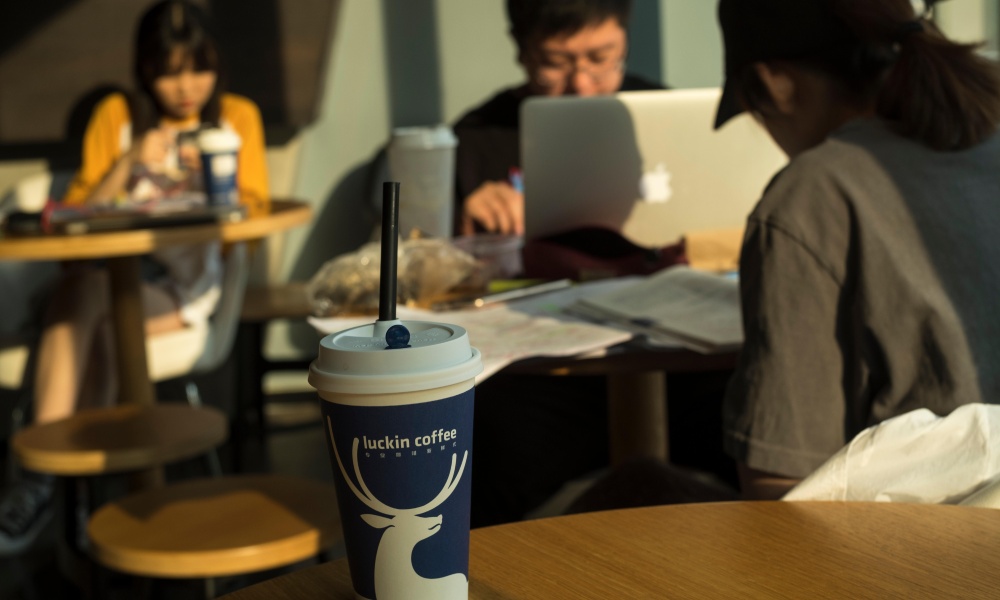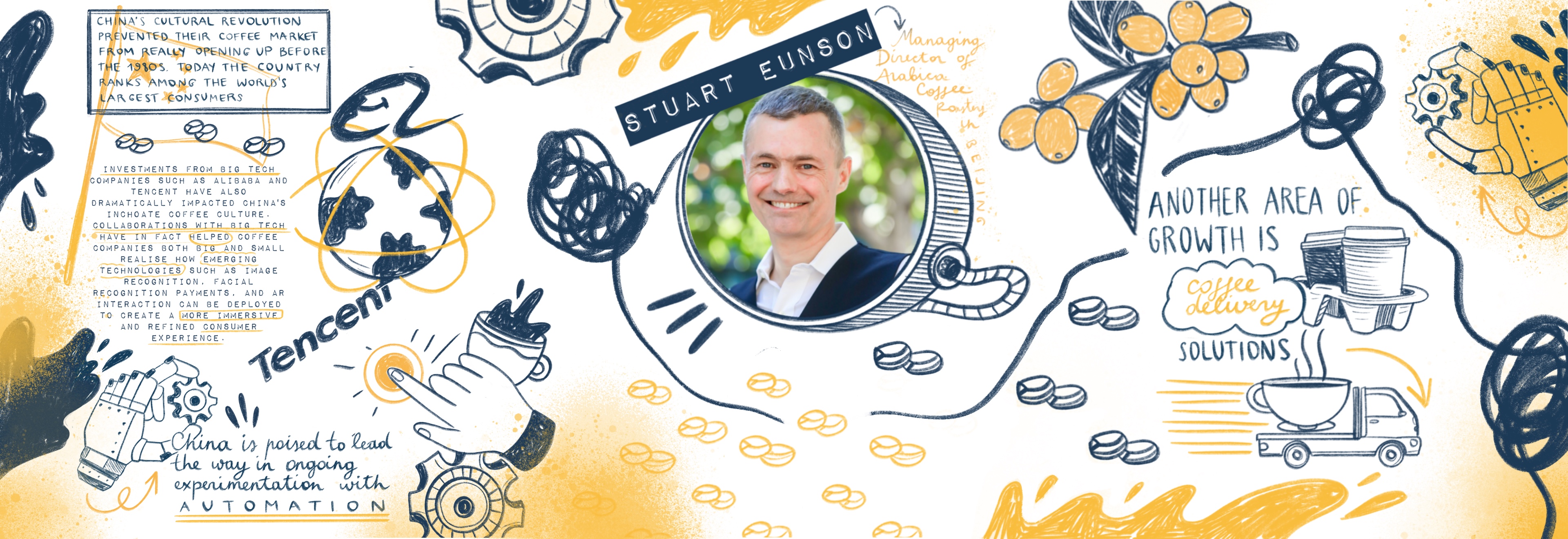How Chinese coffee consumption is driven by technology
Matt Haw speaks with Stuart Eunson about the development of the Chinese coffee market, and how technology has been a driving force.
China’s coffee market has been growing rapidly over the last few years and is now considered a benchmark for any emerging coffee-consuming country.
In that time, Chinese coffee consumption has gone through many phases. “In the nineties, coffee was marketed in China as an affordable luxury,” says Stuart Eunson, managing director of Arabica Coffee Roasters in Beijing.
This continued into the 2000s, as global coffee brands entered the Chinese market and began to establish a coffee-drinking culture. From 2006 to 2016, Chinese coffee consumption grew at an annual average of 22%.
At this time, coffee consumption was synonymous with disposable income, and purchasing coffee from global brands was an activity for the country’s growing middle class.
This has since changed, however. Younger generations have demonstrated a preference for domestic brands in China. Gen Z and young millennials are championing their homegrown brands.
This means that much like in other markets, younger generations are shaping Chinese coffee consumption.
China’s younger generations hold different views on coffee compared to previous generations. Stuart points out that, in the 1990s, there was skepticism that China would embrace coffee, but now there are over 7,000 coffee shops in Shanghai alone.
“This younger demographic is now at an age where they have their own income and coffee is one of many things that they’re buying more of than previous generations did,” he says.

Big tech investments
Major investments from companies like Alibaba and Tencent have significantly influenced Chinese coffee culture. Alibaba’s retail partnership with Starbucks in 2018 sparked a string of multimillion-dollar investments into the industry which have transformed how people consume coffee.
For example, Tencent’s partnership with Luckin Coffee was something of a masterclass in how consumer data, mobile apps, and other tech solutions can create innovative retail solutions for the coffee sector.
Collaborations with large tech companies have helped coffee brands realise how emerging technologies such as facial recognition payments and AR interaction can create a more immersive and streamlined consumer experience.
Furthermore, these consumption habits are influenced by technology beyond the retail experience.
For example, barista livestreaming has been a source of remarkable growth. In 2019, the number of domestic livestream viewers reached 309 million, accounting for over a third of the country’s internet users.
With such a reach, livestreaming has a significant influence over Chinese consumers. Some argue that it is a natural progression from ecommerce, with purchasing behaviours being swayed by the authoritative behaviour that baristas exhibit during livestreams.
Additionally, deliveries have become a cornerstone of Chinese coffee consumption patterns. The majority of coffee delivery service users in China are between 22 and 39 years old. As such, this is another trend being driven by China’s young and emerging middle class.
Ultimately, technology has significantly shaped the way Chinese consumers interact with coffee. As more young people enter the working demographic, this trend can only be expected to continue.
The sky’s the limit
In contrast to European and North American markets, China is not tethered to old-fashioned cultural traditions – for them, the sky’s the limit. This makes China well-positioned to lead the way in experimenting with automation and revolutionary retail experiences.
“Coffee is such a new product, people don’t have those traditional ideas a proper coffee shop should be,” says Stuart.
For instance, Luckin has seen the footprint of its stores shrink even as the brand exploded. As they focused on mobile app ordering and delivery experiences, there was no need for customer seating.
“They could get their stores down to under 20 square metres, including a day’s worth of storage, and a robot making everything,” says Stuart. “I think that’s the direction the market is going.”
This allows companies to reduce their costs and charge less per cup, making coffee more affordable – and appealing to the growing demand in China.
In particular, Stuart highlights the rising use of augmented reality in the coffee sector. Starbucks and Alibaba’s first experiment with it in 2017 showed potential for increased customer engagement.
A study revealed that a growing number of younger consumers prefer meeting friends in an online environment over a physical one, and Stuart foresees this merging with augmented reality and automation to create the first digital coffee shops.
What remains to be seen is how the evolution of Chinese coffee consumption will impact the rest of the coffee industry. Some argue that these trends have already influenced markets in the West, with Starbucks implementing more delivery and other convenience-driven experiences in their US stores.
However, it’s hard to imagine Europe and other major coffee-consuming countries completely abandoning their heritage in favour of a full digital revolution as we’ve seen in China. Nevertheless, as younger generations gain more market influence worldwide, anything is possible.








